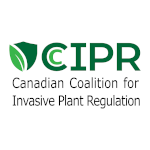Dealing with Invasive Plants – My Backyard Story
By Farnaz Bassiri
My backyard story starts when my neighbour came over to ask for permission to remove a tree that was at the fence line. The Town of Oakville staff came to look at my backyard and that’s when I first learned that it was full of invasive plants. As an immigrant I had no idea. I thought if a plant was “wild”, it was native. There were over 50 invasive common buckthorn trees, as well as 7 Siberian elms and 2 Norway maples. What I thought were wildflowers turned out to be highly invasive non-native garlic mustard and ditch lily.
This journey of removing invasive plants was very expensive and time consuming. After the removal, it has been an arduous process of exhausting their seed bank. A single garlic mustard produces up to 50,000 seeds. Buckthorn has such a strong regrowing root that I now know to pull it out as soon as the seedling is recognizable, with only a couple true leaves. The town staff told me this process will take 5 years, as seeds continue to germinate overtime.
It gave me a blank canvas but now I had to find plants which were not invasive and were affordable. When I first went to stores, I couldn’t distinguish what they were selling. Were the plants native? Were they invasive? Would I have to pay to pull them out later? That made no sense.
I visited nurseries only to find them selling plants that I had just removed from my backyard. Nursery staff didn’t know which of the plants were invasive and there were no warnings on the labels to help. I searched the internet to find answers but found a lot of confusing information. For example, Euonymus atropurpureus is native to Canada, whereas Eunonymus alatus is invasive, but both have the same common name: burning bush, so at first, I thought the burning bush I bought was native, it turned out it was not! It was a dwarf version of the invasive one. The staff told me it was the native burning bush, so it is not only consumers who are misinformed. Luckily, so far it seems to be sterile, though the label did not provide enough information to know if it is still invasive if the root system is small. Also, barberry, which is listed as invasive on many lists, has varieties that are sterile. Was that a good choice for my yard?
I found a “Grow Me Instead” guide that offered alternatives to invasive plants, but I could not find many of those plants at my local nurseries. I found it so frustrating.
While visiting nurseries, I started telling people that plants in their cart were invasive – they had no idea. They assumed that the stores would not be allowed to sell invasive plants, which is not the case because there is no regulation in place. There were a lot of misconceptions, such as thinking that plants that are annual or biennial can’t be invasive because they die over the winter. You can’t expect the public to be able to tell the difference. I couldn’t ignore the problem because I had to figure out what to plant in my backyard. It was difficult, so I started to advocate more for non-invasive plants.
I realized that even the Town of Oakville has to deal with invasive plants which outcompeted native plants in its forests and trails. They work to remove buckthorn at great cost, and hope the seed bank will be depleted over time. However, if retail outlets continue to sell invasive plants, their seeds may be carried by the wind, insects, birds and other animals, to the newly disturbed areas where buckthorn plants once grew, and once again invasive plants will fill the space.
Regulation of invasive plants will help avoid this situation from happening again. It will stop high-risk invasive plants from being produced and sold to the public. It will also warn the public of low-risk invasive plants through label requirements, and it will increase the availability of alternatives to invasive species for sale. And my backyard story will have a happy end.
